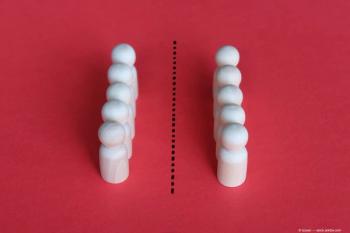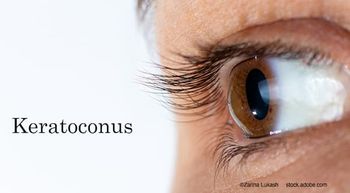
Adding electroretinography: Technology to clinical utility
Pattern electroretinography (PERG) and visually evoked potential (VEP) tests can objectively evaluate the function of axion and retinal ganglion cells. These test results can add another component in successfully treating patients with cataract and/or glaucoma.
By William E. Sponsel, MD, and Blake K. Williamson, MD; Special to Ophthalmology Times
Editor’s note: Advancements in electrophysiological technology can help ophthalmologists to discover vision-related diseases in their earliest stages. In this article, Blake K. Williamson, MD, shares how use of a vision testing system has made a difference in his practice as a cataract specialist, whereas William E. Sponsel, MD, shares his perspective as a glaucoma specialist.
Using PERG in patients with cataracts
Electrophysiology sounds a little like Frankenstein in a mad laboratory; it’s not nearly as sexy as femtosecond lasers or real-time aberrometry. In addition, it has historically been a time-consuming test that required an electrophysiologist to interpret results.
However, pattern electroretinography (PERG) has been around much longer than optical coherence tomography (OCT) images and the literature leaves little doubt as to its accuracy.
The development of new sensors and advanced algorithms has made it a compact diagnostic machine which is easy to have in the office, and a test that a technician can comfortably perform with well-interpreted results.
The vision testing system (Diopsys NOVA Vision Test System, Diopsys) we use can be compared with my smartphone: its uses are limitless, and I use it for early diagnosis of glaucoma and gauging treatment efficacy.
As a cataract specialist, I regularly see patients with some indications of glaucoma, but no definitive diagnosis.
Maybe they have ocular hypertension (OHT) but no sign of disc cupping or visual field loss, or maybe they have a suspicious disc, but their IOP does not draw attention.
Evaluating cell function
PERG provides an objective evaluation of the function of the retinal ganglion cells, permitting the diagnosis of glaucoma up to 8 years earlier than with other methods of diagnosis.
An even better scenario is when PERG results indicate that I can take a patient off hypotensive drops. In some cases, the pressure seemed to be so high that a patient was put on drops. However, after observing their excellent cell function, I am able to take them off their drops and clear up any dryness or ocular surface disease.
My partners and I believe that PERG evaluation is a significant enough advantage for our patients that we have purchased units and perform testing in all four of our offices.
Patients with cataract and glaucoma
With most diseases, early diagnosis is advantageous. This has unique significance for cataract patients. Several of the micro-invasive glaucoma surgery (MIGS) options now available can only be performed in conjunction with cataract surgery. If we suspect glaucoma in a cataract patient but take a “wait-and-watch” approach, not only is it possible that the patient will lose visual field before adequate treatment is achieved, they will also lose their one opportunity to receive a MIGS approach to therapy.
My other primary use of PERG is to follow glaucoma patients. PERG is a dynamic test, so if we catch dysfunction of the retinal ganglion cells prior to loss of visual field, there is the possibility of improvement in cell function. By making this a part of routine follow-up, we know if we are treating sufficiently.
For example, a patient presents with IOP of 24 mm Hg, characteristic visual field loss, and retinal nerve fiber layer thinning, so you confidently diagnose glaucoma and start them on a topical prostaglandin. Three months later, the pressure is down to 18 mm Hg, and the visual field test and OCT look the same.
How do you know whether an adequate IOP for this patient has been reached? You do not-unless you use PERG.
If you perform the test, the waveform looks normal, and the result shows green, you can be confident that the current treatment is sufficient. If the waveform is unchanged from baseline and the result is yellow or red, perhaps they need to have pressure lower than 18 mm Hg.
Whenever I am considering a technology purchase, the most important question is: Will it fulfill an unmet need?
Adding PERG testing has changed the way I treat patients every day. I add a MIGS procedure to a cataract patient, I titrate treatment for a glaucoma patient, or I even take patients off hypotensive pharmacotherapy as a result of the tests. It truly influences how I treat my patients by providing me a more complete picture of their ocular health.
Using PERG in patients with glaucoma
There is substantial focus on IOP in glaucoma as the only modifiable risk factor for disease progression. However, significant epidemiologic evidence from around the world shows that the majority of individuals with pathologic POAG have normal eye pressures. This leaves a disconnection in practice patterns.
Tracking progression with VEP, PERG tests
We do have excellent structural and functional tests with OCT and visual field tests, and while we rely extensively upon these, neither is able to provide information in a single visit that tells if a patient is getter better, worse, or staying the same. A patient with extensive vision loss could be stabilized already and not need highly invasive surgery.
On the other extreme, a young patient with very mild nerve fiber layer loss and normal pressure in the clinic may have intermittent angle closure that manifests with headaches when he is reading on the computer and belies a fast progressing glaucoma.
I have used visually evoked potential (VEP) and PERG tests for years with my patients and have found that they have the detective capacity to determine disease trend in a single visit. The latest OCT technology with automated fields provides an excellent symmetry analysis that will pick up disease well.
However, it tells how many wires are left, not how many are currently dying, and six separate tests over a period are needed to attempt to predict a trend.
On the other hand, electroretinography dynamic function tests can tell if axion cells are functioning well or if ganglion cell bodies are impaired.
A poor PERG result gives an excellent indication that something is going on, and the patient is likely going to get worse.
If a patient has severe disease but the VEP test result is normal, I do not start additional treatment because this patient is not likely to get worse. I have found it to be much more valuable than IOP to determine treatment.
The reliability and value of VEP and PERG tests have been studied extensively, and their high specificity and sensitivity has been known for many years.
However, the electrodes previously required to administer the tests left them relegated to research laboratories rather than in busy glaucoma practices.
The advent of adhesive electrodes has made it possible for companies to bring this valuable technology to the clinic, and all glaucoma specialists could benefit from using it regularly to determine the best treatment for their patients.
William E. Sponsel, MD
Dr. Sponsel is in private practice in San Antonio, TX. He is a consultant for Diopsys.
Blake K. Williamson, MD
Dr. Williamson is in private practice at Williamson Eye Center in Baton Rouge, LA. He is a consultant for Diopsys.
Newsletter
Don’t miss out—get Ophthalmology Times updates on the latest clinical advancements and expert interviews, straight to your inbox.



















































.png)


